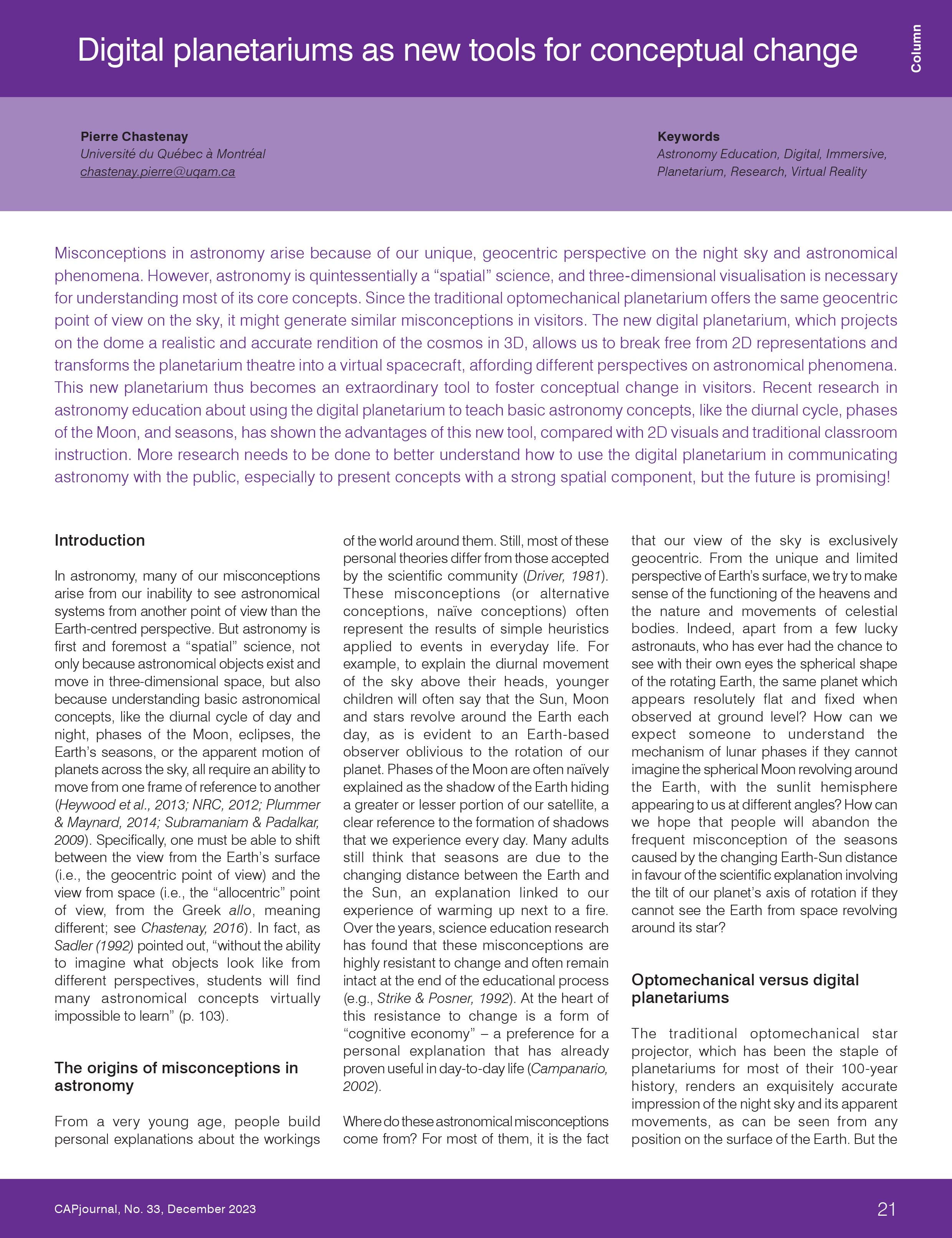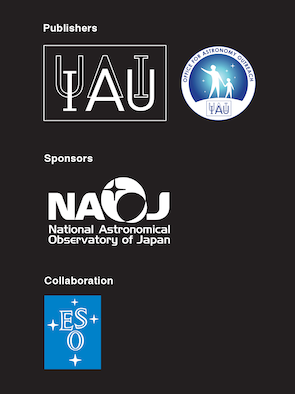|

Download this article
- PDF (381 KB)
Back to the Table of Contents
|
Digital planetariums as new tools for conceptual change (page 21)
Chastenay, P.
Misconceptions in astronomy arise because of our unique, geocentric perspective on the night sky and astronomical phenomena. However, astronomy is quintessentially a “spatial” science, and three-dimensional visualisation is necessary for understanding most of its core concepts. Since the traditional optomechanical planetarium offers the same geocentric point of view on the sky, it might generate similar misconceptions in visitors. The new digital planetarium, which projects on the dome a realistic and accurate rendition of the cosmos in 3D, allows us to break free from 2D representations and transforms the planetarium theatre into a virtual spacecraft, affording different perspectives on astronomical phenomena. This new planetarium thus becomes an extraordinary tool to foster conceptual change in visitors. Recent research in astronomy education about using the digital planetarium to teach basic astronomy concepts, like the diurnal cycle, phases of the Moon, and seasons, has shown the advantages of this new tool, compared with 2D visuals and traditional classroom instruction. More research needs to be done to better understand how to use the digital planetarium in communicating astronomy with the public, especially to present concepts with a strong spatial component, but the future is promising!
Suggested Citation (APA)
Chastenay, P. (2023). Digital planetariums as new tools for conceptual change. Communicating Astronomy with the Public Journal, 33, 21-23. https://www.capjournal.org/issues/33/33_21.pdf
|

